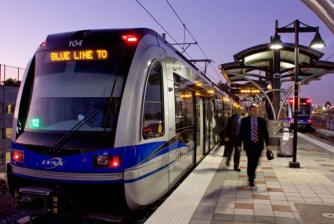Mary Newsom
Recent Posts
More parking? Less parking? The debate continues.
| | No Comments
Tobe Holmes of University City Partners describes changes coming to the UNC Charlotte part of the city when a light rail extension opens early in 2018. In the background is a new parking deck with retail on the ground floor, built by the Charlotte Area Transit System. Photo: Mary Newsom In the playbook for transit-oriented development, as a city adds more transit service it needs less parking. Here's the reasoning: Building too much parking is an incentive to people to keep driving. Parking lots and decks create large, unfunded environmental and health costs, including but not limited to the heat island effect, water pollution from gallons of storm water runoff and the American obesity epidemic from too much driving.As Charlotte’s Blue Line Extension light rail project nears completion (March 2018 is the projected opening), parking decks are rising along the line, including two huge decks near the UNC Charlotte campus where the line will end. People who pay attention to such things ask whether we’re overbuilding parking. One recent example is this opinion piece from Charlotte Five – “It's insane to keep building huge parking decks along the light rail line.”The piece responded to a previous article - “It would be insane for Charlotte to stop building parking for apartments — right now.”Three thoughts about all that:1. I think both arguments are right. We need less parking in the long run, but for now we continue to need parking. (There is a whole other topic to be addressed, not here and not today, on how to shrink the number of surface parking lots being built.)2. In this case it’s not planners who should feel the most heat but lenders – who may not even know where Charlotte is and who won’t finance a project if the parking spots don’t fit their math formula. From what I see and hear most lenders don’t give a rip about good urbanism, diversity of uses, protecting surface waters, reducing obesity or any of that. They have their formula.3. This is an opportunity for creative, innovative building design – a flexible parking desk structure that could adapt, as the city becomes easier to navigate without a car, into something else.Here’s why we can't instantly get rid of parking, happy though I would be to be arguing the other side of this. Most of the acreage in Charlotte, like most Sun Belt cities, was built to make driving easy, not walking or biking or transit. In huge parts of the city only the brave, the masochistic or the desperate choose to walk or bike to destinations. Yes, a few older neighborhoods break that pattern – Dilworth, Plaza Midwood, NoDa, etc. Most Charlotteans don't live there.Consider: UNC Charlotte is nearing 30,000 students, plus 4,000-some faculty and staff. We can all agree that encouraging more of them to use transit is ideal. With more people taking transit the campus can build fewer large expensive parking decks. But people live all over the city. Using transit to get to the campus is huge time investment requiring walking long distances to a bus, which may run only every 30 to 45 minutes, then riding to campus or to a light rail station. Only two bus routes serve the campus; one originates uptown, the other at SouthPark mall (that route will probably change as part of other transit changes to campus). Most people will not choose to invest 90 minutes or more for a trip they can drive in 20 to 30.The city's bus service is better than in 1998, but nowhere near what it needs to be. The Charlotte Area Transit System is studying its bus routes, but is not well-funded enough to simultaneously build light rail and dramatically improve bus service.Consider people living near the light rail. Some did opt to live there so they can take the rail to work. But people change jobs and the new one may not on an easy transit route. Jobs are spread all over the city, with only a sliver of them easily reachable by the lone light rail line. And people acquire roommates, partners and spouses whose jobs may not be transit-friendly. (See this 2014 piece, Car-free in Charlotte? It isn’t easy, by a writer who gave up on South End as too hard to manage without a car.)So for the foreseeable future, driving is necessary even for those of us who wish we could drive less. That means parking is necessary. For now. No, we don't need as many spaces as lenders require to be built. We should figure out how to incentivize shared parking, and work to minimize surface lots. But still.Yet couldn’t some of those ugly decks be repurposed in time? I’m not an engineer so maybe this is nuts, but I have to think that with innovative design and engineering, a parking deck could be designed to transition at a later time into residences or retail, with a much smaller share of parking.As the city densifies and transit grows more robust – we can always hope! – we can get by with less parking. And those ugly decks could sprout other, more congenial uses.
His Plan: Help Charlotte Manage Its Growth
| | No Comments
As Charlotte booms, how is the city’s planning department working to change city ordinances to bring them into the 21st century? An interview with interim Planning Director Ed McKinney.
When Downtowns Come Alive Again
| | No Comments
If you’re thinking downtowns are dead, you haven’t been paying attention lately.
City Proposes Two Protected Bike Lanes Through Uptown Charlotte
| | No Comments
With surveys showing plenty of Charlotteans would bicycle more if they felt safer, city planners propose two better-protected bike routes through uptown.
Driving alone? Way2Go CLT Wants to Change That
| | No Comments
A new initiative is using prizes as incentive to encourage people to reduce single-occupancy trips by car. The project runs March 1-Oct. 31.
Tell Charlotte What You Think About Its New Bike Plan
| | No Comments
The City of Charlotte wants public reaction to the draft of its updated bicycle plan.
The ever-present dilemma of paying for transit
| | No Comments
The topic of transit – or the lack of it – arose during public hearings on the vast new River District development that won city approval last month. The almost 1,400-acre development will grow west of the Charlotte Douglas International Airport in what today is a rural and thinly settled area.The development is expected to generate 120,000 vehicle trips a day. That number got the attention of Charlotte City Council members, who talked about transit but did little beyond talk before approving the developers' rezoning request. That's because the city's plans for transit to that part of town are, for now, vague and – like most of the 2030 Transit Plan beyond the Blue Line Extension – unfunded.The city isn't allowed to impose impact fees without state legislative approval. And don't hold your breath for that. Further, state courts struck down some counties' attempts at adequate public facility ordinances – where developers either had to wait until local governments could afford to offer public facilities such as classrooms and police/fire service to serve the new development, or pay a fee to help the local government provide them.So Charlotte can't do what Sacramento, Calif., is proposing: a transportation impact fee on most new construction to fund more and wider streets and improve biking and pedestrian facilities. See Sacramento asks developers to open wallets to keep city streets from clogging. (The Sacramento fee would range from a few hundred dollars for some rental units to more than $2,000 per single-family home in some areas. It's expected to generate about $3 million a year.But N.C. local governments still have negotiating power. In Charlotte, developments expected to generate a lot more motor vehicle trips have to pay for a traffic impact study, and talks between city planners and developers often produce a "voluntary" agreement for the developer to provide a turn lane or a traffic signal or some such. That's called an "exaction," although developers joke it's more of an "extraction."As I listened at the River District public hearing in October, I wondered whether the city could put some transit funding on that list of negotiated agreements. It's fairly routine for the city to ask for, and get, a slightly upgraded bus stop, generally a concrete pad to bus riders don't have to stand in the mud in wet weather. But why not expand the menu for those asks, especially for a development expected to generate 120,000 trips in a part of town not built for that much traffic?The city has a fee-in-lieu mechanism for its tree ordinance. Could there be something similar for transit needs?Would that solve the cavernous funding gap between our local transit plans and our local transit revenue from the countywide half-cent sales tax? No. But it would help – and it would instill into local practice the idea that transit should be among those things developers could "volunteer" to assist with.
Raised in Charlotte, He Now Runs the Planning Show in Atlanta
| | No Comments
Last year a Charlottean became Atlanta’s planning director.
Bike-Share and Other Changes Arriving With Light Rail to UNCC
| | No Comments
Light rail to the UNC Charlotte campus will transform transportation options in the area, from parking to buses to an on-campus bike-share program that debuts next year.
An ’80s Tale: How Rural Preservation Didn’t Happen
| | No Comments
How decisions made decades ago ensured that almost all of Mecklenburg County would be open to development.
Another Independence Boulevard — Lost Opportunity or Potential Future?
| | No Comments
Bologna's Independence Boulevard on a Monday morning in October. Photo: Mary NewsomOn a recent trip to Italy, we stopped for a night in the northern city of Bologna, home to some famous pasta sauces, the world's first university and a basilica where, legend has it, a German priest was so disgusted by the church's opulence he went back to Germany and – his name being Martin Luther – started the Reformation. It's also home to an Independence boulevard. I didn't capitalize "Boulevard" because the official name of the street is Via dell' Indipendenza. In any case, it's a powerful reminder that a busy city thoroughfare need not be ugly.Photo: Mary NewsomUnder the arcadeI took these photos about 9 a.m. on a Monday, and I took them during breaks in traffic, so they don't accurately convey the traffic, although it's safe to say it's far less than Charlotte's Independence Boulevard, which carries more than 100,000 vehicles a day in places.Our Indy Boulevard began life in the 1950s as a four-lane U.S. highway (U.S. 74) that sundered a white, working class neighborhood as well as the city's first municipal park and its rose garden. Today, Independence Boulevard in Charlotte is either a freeway-style highway lined with sound walls or, where the freeway hasn't been built yet, a seemingly endless strip of bleak, now-bedraggled highway commercial development that had its heyday in the 1970s and '80s.But in Bologna, first settled about 1,000 BC, via dell' Indipendenza looks different. We arrived on a Sunday evening and the street was jammed with people, and no cars. The street and several others are pedestrianized from 8 a.m. Saturday to 10 p.m. Sunday.The street itself, like many of the old streets in the city center, is lined with an arcade, which protects pedestrians in bad weather. Under the arcades, many with vaulted ceilings, the sidewalks are terrazzo tile, or something similar. No chewing-gum-stained concrete or crumbling asphalt.Is there any hope for our Independence Boulevard? I confess to being a pessimist about that. Streets, I've observed, set a development pattern that's difficult to change unless the government decides to buy up all the land, tear everything down, and start over with new development. They have tried that before here, and urban renewal was a brutal disaster.Charlotte's Independence Boulevard, 2014. Photo: Nancy Pierce
Expecting 400,000 New Charlotteans, CDOT Projects $5B in Transportation Needs
| | No Comments
By 2040 Charlotte will grow by 400,000 people, city transportation planners project. How can Charlotte handle all the new daily trips? A 25-year plan would spend $5 billion.
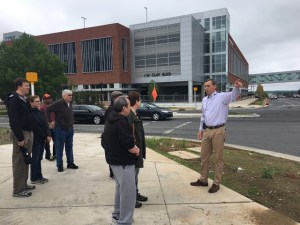
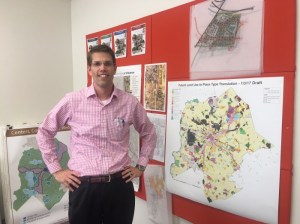
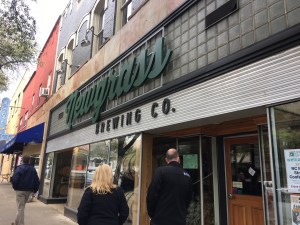
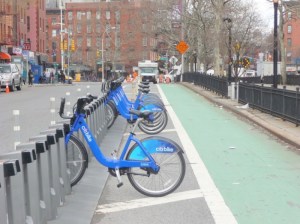
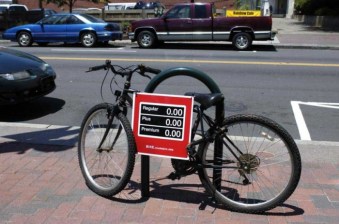
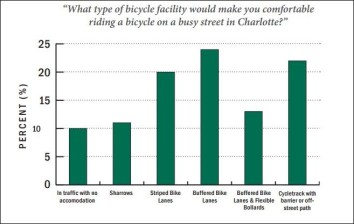
![From Charlotte to Davidson to Charleston to Atlanta, planner Tim Keane's career has taken him to some iconic Southeastern cities. PlanCharlotte interviewed Keane, now the commissioner of planning and community development for the City of Atlanta. Photo: David Hunter [CC BY 2.0 (http://creativecommons.org/licenses/by/2.0)], via Wikimedia Commons]](https://se.streetsblog.org/wp-content/uploads/sites/12/2016/12/Atlanta_skyline-DavidHunter-tandemracer-W.Commons.jpg?w=333)
